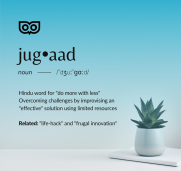
Should you autopost the same updates on Facebook, LinkedIn and Twitter?
A client wrote to us and asked “How do I post the same update on Twitter, Facebook and Linkedin, automatically, every time I put a new blog post up? I really want to save time!”
This prompted a flurry of advice from our side on whether this is really something you want to be doing.
If you want to post on the different platforms in one step, you could use Social Media Dashboard apps and tools like Hootsuite or Market Me Suite which allow you to post the same things on all the different social platform.
Our friend, Marketing Mentor Tamsin Fox Davies, is a fan of using Dashboards too and she says: “Dashboards are great tools, but are best used in combination with direct posts for actual updates. For example, use a dashboard for monitoring, finding people to follow, keeping track of your mentions and items to repost/retweet. You can also use other autopost tools like the “Tweet Old Post plugin for WordPress, to keep old blog posts visible, and the simple share tool in Constant Contact, to announce publishing your email newsletters.”
But Tamsin and I both agree that autoposting everything to all the social networks is not something we recommend, and her is why:
5 reasons why you should think twice before autoposting the same message on different social media platforms
- Each platform is different When you post on Facebook you get more than 140 characters, and you can upload images and video files, or choose thumbnails to go with each post update. By having the post come from a 3rd party application you miss out on making your Facebook posts look visual and enticing – so I would always recommend manually posting on Facebok so your content looks how you want it to.
- And it could have the opposite effect: Facebook uses an algorithm called Edgerank to decide if posts get higher priority based on the amount of likes/shares/comments the user gets. Autoposted updates (from 3rd party applications like Hootsuite) have been shown to receive less of this interactivity because Facebook doesn’t give these as much prominence within the Edgerank. So your posts will not be seen as much if you use third party applications.
- Twitter has its own language and style: When you update Twitter, you need to be very concise and shorten links. But on Twitter you can update more often about your latest posts, as the idea is that you are tweeting lots of other stuff in between. As long as you change the way you write your tweet and headline you can do the tweet to the same blog post. Also, on Twitter, you need to be retweeting, using hashtags, and @mentioning other users – and on the other social media platforms this a strange and unusual language!
- Are you really saving time? Writing a blog post is far more time consuming than updating LinkedIn, Twitter and Facebook with links to the blog. Even if you do these each separately it would only add 5-7 minutes extra to your time spent. Why not take this extra time and do these updates in a way that is appropriate for the platform?
- There are other ways to share quickly: On your blog you could add social sharing buttons, so that whenever you write a blog post you can click these links at the bottom of the post (one for Twitter, one for Facebook) and this will then automatically update Facebook and Twitter with a bit of text and a link to your blog post. This way also allows anyone else reading the blog post to share the post on Twitter and Facebook if they wish to do so, in a quick and easy one-click way, directly from the blog post.
I hope that has convinced you for the good reasons above – autoposting the same update on all platforms is something you should be doing only SOMETIMES, or not at all! Much better to update mindfully, and differently according to the platform you are on!



Comments
Jonathan Downie
I am not so sure. Yes, each platform has different strategies but some dashboards (notably hootsuite) take that into account and add visual previews to Facebook but not to twitter. All our department blogs are auto-posted, especially given that we write posts in advance, scheduling sometimes up to a month at a time. This strategy gained us guaranteed viewings for each post, even before you take into account retweets and shares. The fact that we are on sustained growth in traffic and clickthroughs seems to bear out the usefulness of this strategy. Also, something like 50-60% of our visits now come via facebook, even though all our posts are short enough for twitter.
So, I actually think that autoposting can work and I would recommend at the very least, using a third-party dashboard. If you want to, this can be used to post to single channels. It probably does depend on your metrics and where and who your audience are.
Liz Broomfield
I do both …
Fully automated everything if I am very busy with work: blog post is scheduled, auto-posts itself and auto-alerts the social media sites.
Hand-crafted everything if I have those minutes to spare – and then a different message on each.
And I usually re-notify later, to catch people at different times of day / in different time zones, and will vary it then.
Thanks for talking about this important issue!
Liz
Charlene Hutsebaut
Hi Keren,
Thanks for this post. I agree that each platform can have a very different feel, audience and of course length. I follow your guidelines and post separately and it doesn’t take much time at all.
Charlene